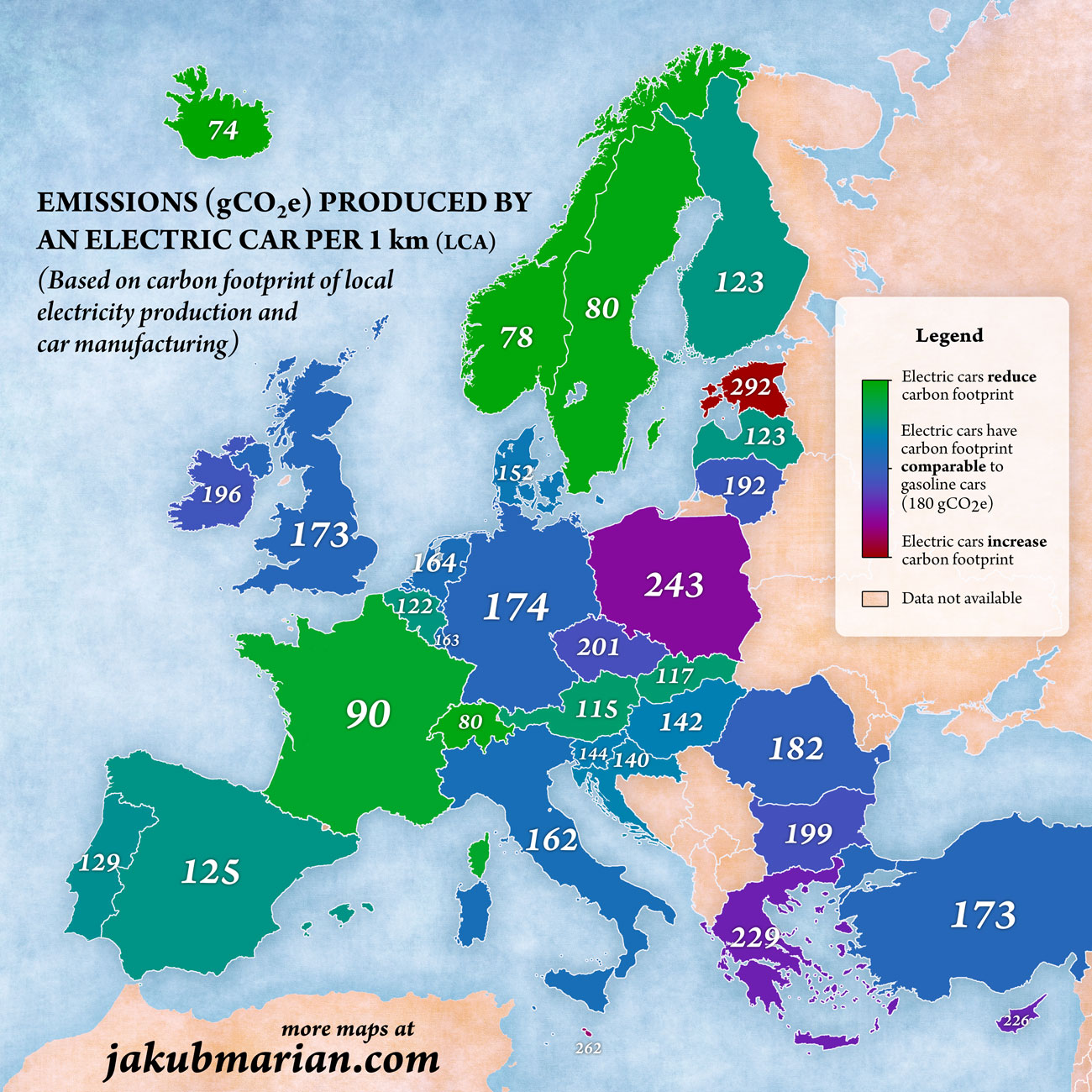Politicians and car manufacturers praise electric cars as a solution to fight climate change, but the life cycle analysis of the whole vehicle shows that electric cars also cause pollution, sometimes even more than gas and diesel cars.
Manufacturing of batteries is a highly energy-consuming process. However, the main reason why the carbon footprint of electric vehicles can be significant is the way electricity is produced. Electricity emission factor is different according to the type of power plant (coal, natural gas, nuclear, hydroelectricity, wind power…), so greenhouse gases emissions produced by an electric car change a lot from one country to another due to the type of power plants.
The following map shows the carbon emissions caused by an electric car, in gCO2e/km (gram of CO2 equivalent) by country. This should be compared to the carbon footprint of a diesel car (170 gCO2e/km) or gasoline car (180 gCO2e/km), which are currently the most common types of vehicles.

Four categories of countries can be distinguished in Europe:
- Countries where electricity is mainly generated from renewable sources, such as Iceland or Norway, where hydropower produces almost all electricity. In those countries, electric car is a real solution to fight climate change (these are all green(ish) in the map).
- Countries where electricity is mainly generated by nuclear power plants. In France, Slovakia and Hungary, nuclear power plants generate respectively 77%, 57% and 54% of electricity. In those countries, electric cars’ carbon footprint is lower than that of traditional thermic cars since nuclear power plants don’t produce carbon dioxide, but the nuclear waste question still remains.
- Countries where electricity is mainly generated from natural gas. Electric car carbon footprint is globally equal to diesel car or gasoline car. Netherlands, Germany and UK gather more than 60% of electric cars in the EU, with more than 190 000 vehicles in 2015, even though there is no “climate interest” at all.
- Countries where electric cars produce more greenhouse gases than a thermic car since electricity is largely generated from coal or oil shale. In Poland and Estonia, electric cars produce respectively 30% and 60% more CO2 than gasoline cars. Last June, the Polish Government presented the objective of one million electric cars in 2025, but such a situation would raise greenhouse gases emissions by additional 900 000 tons of CO2e a year.
More than half a million electric cars were sold in the world in 2015 with the help of nearly €4 billion of public funds (source). If the political goal is really to reduce greenhouse gases emissions in transport, public money should be spent first to support public transportation, soft mobility and renewable energy.
 Tip: See my list of the
Tip: See my list of the  Most
Most